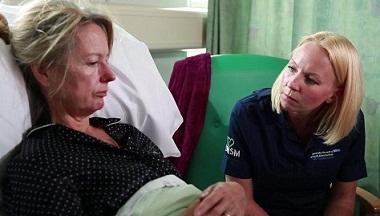Nursing revalidation
Introduction
Revalidation has been introduced to demonstrate that nurses and midwives are practising safely and effectively and are following the principles set out in the ‘The Code: Professional standards of practice and behaviour for nurses and midwives’ (2015). Revalidation is now a requirement for all nurses and midwives wishing to maintain their registration with the Nursing and Midwifery Council.


The knowledge and skills taught in the 3 hour SAGE & THYME Foundation Level workshop apply to the following sections of the code:
- Section 2 - 'listen to people and respond to their preferences and concerns'
- Section 3 - 'make sure that people’s physical, social and psychological needs are assessed and responded to'.
Two articles, written by Mike Connolly, the Lead Trainer of SAGE & THYME, published in the Nursing Times (21 Nov 2016) (refs 1 and 2), highlight how listening and responding to patients is a core skill that needs to be taught, and how the SAGE & THYME model provides a structure for this:
- Part 1 describes how the SAGE & THYME model can be used as a 'satellite navigation system' to listen and respond to patients' concerns
- Part 2 provides exercises to practice listening skills for revalidation.
1 Connolly M (2016). Listening skills 1: how to improve your listening skills. Nursing Times: 112 (45/46); 10-12.
2 Connolly M (2016). Listening skills 2: developing listening skills through practice. Nursing Times: 112 (45/46); 16-18.
Preparing for revalidation - SAGE & THYME
A discussion between a nurse and the relative of a patient (not a real transcript) can be downloaded from the Nursing Times web site (see the link at the end of the part 2 article). It demonstrates SAGE & THYME being used as a communication structure. It shows the ward sister ‘Julie Harrop’ listening completely and then providing organised, person centred support.
You can use this for learning (in preparation for nursing/midwifery/medical revalidation for example) by reading the dialogue without the annotation and then by marking where you see foundation level communication skills and the steps of the SAGE & THYME model being used by the nurse.
Once you have ‘marked up' the dialogue, you can then downloaded the annotated dialogue to see where we have placed the foundation level communication skills being used by the nurse and the steps of the SAGE & THYME framework. You can use this to check and to compare your labelling of the dialogue.
Further CPD on communication skills
Elaine Bramhall (former SAGE & THYME and SATFAC trainer), has written an article for the Nursing Standard on 'Effective communication skills in nursing practice' (2014). This includes 'time out' exercises to reflect on and improve knowledge on effective communication.

